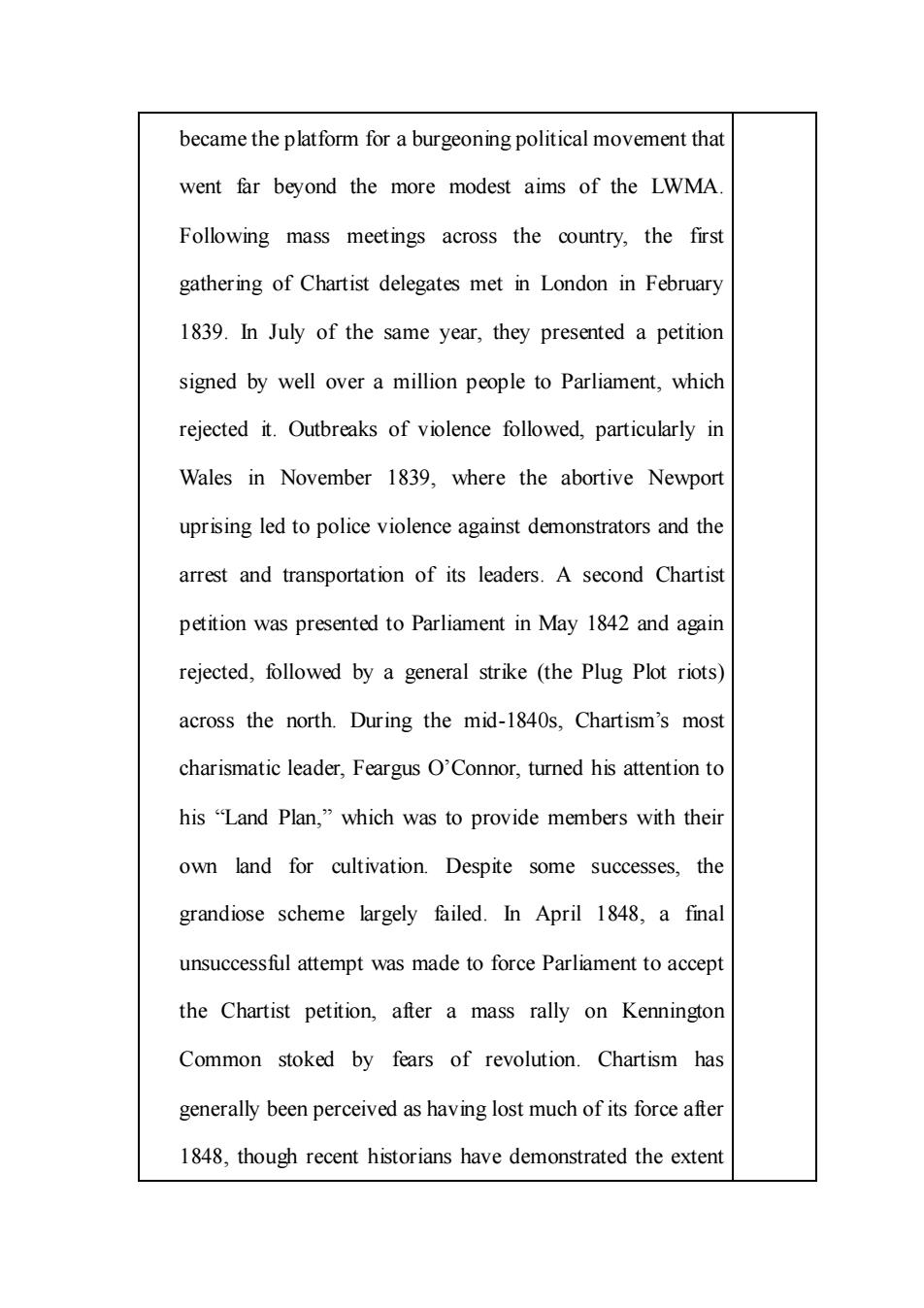正在加载图片...

became the platform for a burgeoning political movement that went far beyond the more modest aims of the LWMA Following mass meetings across the country,the first gathering of Chartist delegates met in London in February 1839.In July of the same year,they presented a petition signed by well over a million people to Parliament,which rejected it.Outbreaks of violence followed,particularly in Wales in November 1839,where the abortive Newport uprising led to police violence against demonstrators and the arrest and transportation of its leaders.A second Chartist petition was presented to Parliament in May 1842 and again rejected,followed by a general strike (the Plug Plot riots) across the north.During the mid-1840s,Chartism's most charismatic leader,Feargus O'Connor,turned his attention to his "Land Plan,"which was to provide members with thei own land for cultivation.Despite some successes,the grandiose scheme largely failed.In April 1848.a final unsuccessful attempt was made to force Parliament to accept the Chartist petition,after a mass rally on Kennington Common stoked by fears of revolution.Chartism has generally been perceived as having lost much of its force after 1848,though recent historians have demonstrated the extent became the platform for a burgeoning political movement that went far beyond the more modest aims of the LWMA. Following mass meetings across the country, the first gathering of Chartist delegates met in London in February 1839. In July of the same year, they presented a petition signed by well over a million people to Parliament, which rejected it. Outbreaks of violence followed, particularly in Wales in November 1839, where the abortive Newport uprising led to police violence against demonstrators and the arrest and transportation of its leaders. A second Chartist petition was presented to Parliament in May 1842 and again rejected, followed by a general strike (the Plug Plot riots) across the north. During the mid-1840s, Chartism’s most charismatic leader, Feargus O’Connor, turned his attention to his “Land Plan,” which was to provide members with their own land for cultivation. Despite some successes, the grandiose scheme largely failed. In April 1848, a final unsuccessful attempt was made to force Parliament to accept the Chartist petition, after a mass rally on Kennington Common stoked by fears of revolution. Chartism has generally been perceived as having lost much of its force after 1848, though recent historians have demonstrated the extent